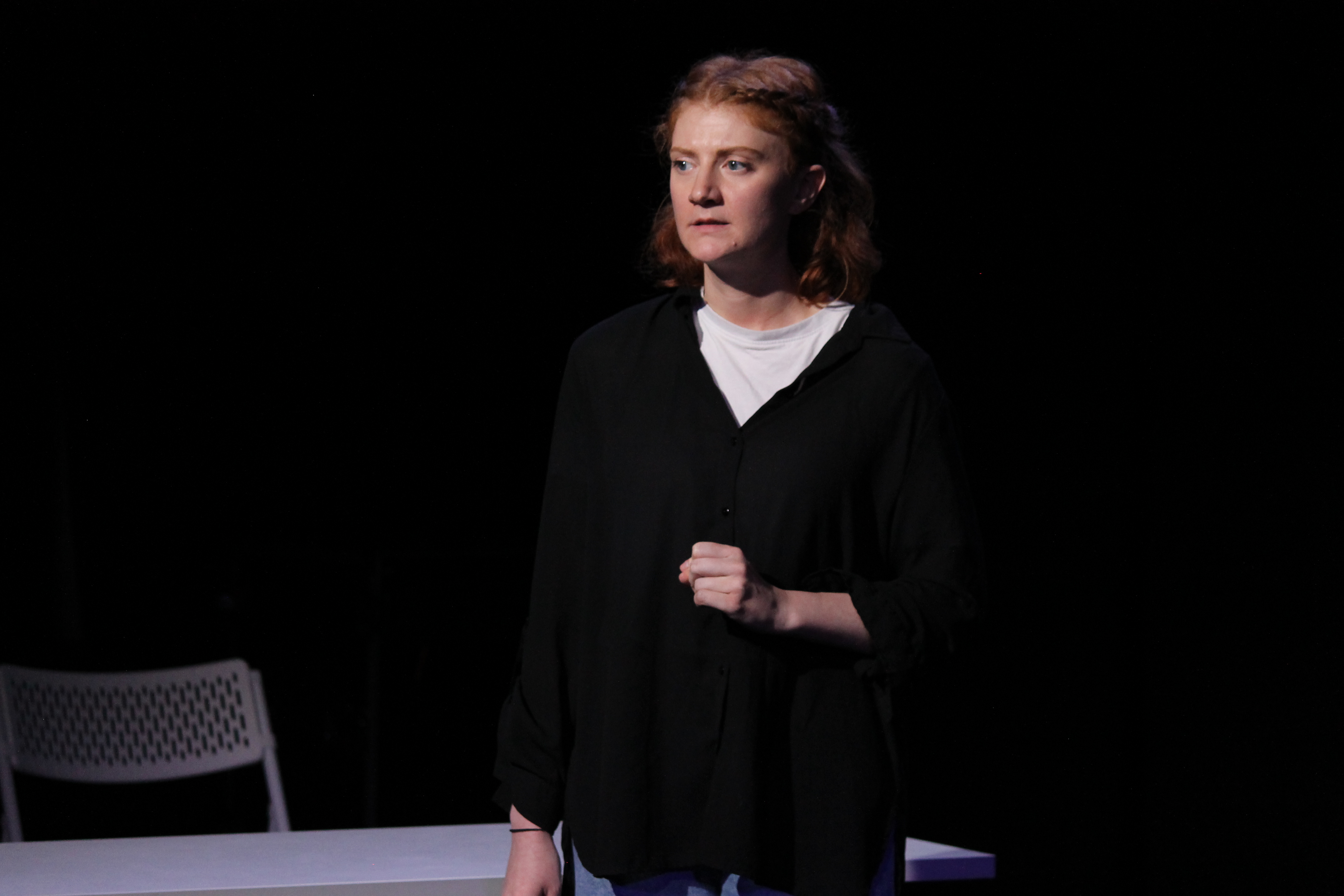The Last Time I Saw Caileigh – Barons Court Theatre, London
The Last Time I Saw Caileigh encourages audiences to be open to new perspectives on non-binary identity and erasure.

The Last Time I Saw Caileigh
The theatre gods (I guess that’s Dionysus and the Muses…?) have a habit of programming my weeks thematically. This week’s theme is the sometimes difficult process of feeling comfortable in your own skin. We had one take on this yesterday with Hole. And today we are discussing The Last Time I Saw Caileigh, on at the Barons Court Theatre before a UK tour in the autumn.
The Last Time I Saw Caileigh takes a different approach than Hole to identity as a journey. It is the story of Caileigh (naturally), who has begun to discover their non-binary gender identity. During this confusing time, as they struggle to express what they’re feeling and find a way to be in the world that feels right, those close to them struggle in their own ways, too. Struggle to understand, to show compassion, to show up for Caileigh as they need them to. And so Caileigh (Victoria Sasso) has disappeared.
The actual format of this work of devised (collaboratively developed) theatre crosses slightly into a suspension of disbelief. Caileigh’s partner Faruk (Harun Ćehović), aunt Maureen (Tiffany Elana King) and friend Maxime (Matthias Moret) have gathered to try to figure out where they’ve gone. Could also be a job for the authorities, but that would offer up fewer dramatic possibilities. Let’s give everyone the benefit of the doubt and assume Caileigh hasn’t been missing long enough for this to be a missing person’s case. There’s another layer to it, of course, around the LGBTQIA+ community’s sometimes uneasy relationship with the police.
Death By a Thousand Cuts
The action flits back and forth between the tense gathering of these individuals linked only by their connection to Caileigh, and flashbacks in which they act out their last interactions with them. Maureen talks about a death by a thousand cuts at one point, and that is more or less what we see. The lack of understanding, the self-centred anxieties, even the advice – none of it is intended to hurt Caileigh, but cumulatively it adds a little weight at a time to their struggle, until the load becomes unbearable.
The fact that The Last Time I Saw Caileigh is devised allows for the representation of genuinely divergent viewpoints, in a way that I don’t think a work by a single playwright would. And this diversity of viewpoints is important. It would be a rare person who understands innately how to navigate their own or another’s journey of gender discovery. It’s an area where most of us probably have a lot to learn. But, as this group discovers, really seeing the person, in this case really seeing Caileigh for Caileigh, is the first step.
If what I’ve described sounds a little like a pedagogical tool, that is how I felt at times as well. The premise, as I’ve said, requires a little suspension of disbelief. The performances are a little uneven at times, but the central role of Caileigh is deftly and passionately acted by Sasso. The staging could have done with better blocking for performance in the round: perhaps later venues will be better suited. But it’s a work with a lot of purpose and plenty of potential to reach hearts and minds.
Salterton Arts Review’s rating: 3/5
The Last Time I Saw Caileigh on at Barons Court Theatre until 22 June 2024. More info here, and future tour information here.
Trending
If you see this after your page is loaded completely, leafletJS files are missing.

